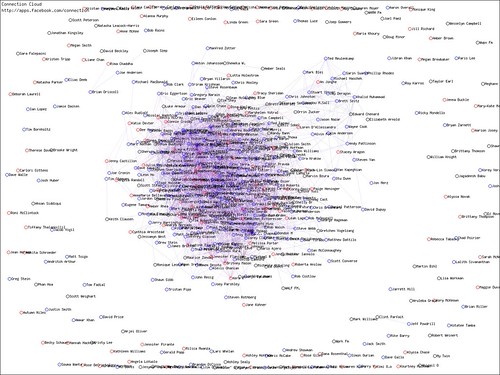Well now. This is a new twist. MySpace and Google have teamed up on OpenSocial, making the list of OpenSocial API services considerably more interesting.
Engage.com, Friendster, Hi5, Hyves, Imeem, LinkedIn, MySpace, Ning, Oracle, Orkut, Plaxo, Salesforce.com, Six Apart (the parent company of TypePad, Movable Type, LiveJournal, and Vox), Tianji, Viadeo, and Xing.
Think for a moment what this means. You write an OpenSocial App for LinkedIn and it will run on Vox or LiveJournal. It will run on MySpace. It will run on Plaxo. Google’s OpenSocial API will give you the ability to cross social network platforms easily as a developer, and if you have the choice of writing for Facebook alone or writing for 12 platforms at once, including the most populous network on the planet, where will you allocate scarce development resources?
Google has declared all out war on Facebook with this coup, and hats off to them. Will Facebook join? Even if they don’t, it’s inevitable that someone will write middleware connecting the OpenSocial API to the FBML/FQL API. What does this mean for your Facebook development projects? Put ’em on the back burner the moment OpenSocial’s API is published and goes live; assume that Facebook will -need- to be compatible with it to survive.
Here’s an even more striking thought: tools for marketing written for MySpace will be tools written for marketing on OpenSocial. Social media marketing pros, get ready to rock the web. A peek inside the API documentation reveals:
- Name
- Postal address
- Email address
- IM
- Phone number
- Profile traits
The ability to market based on targeted, self-identified data AND have contact information makes OpenSocial a Facebook-killer from a business perspective if they don’t jump in.
Early bets: if you’re a musician, put your money on iLike having an OpenSocial app early out of the gate. They rocked it hard with Facebook and will be looking for a repeat performance for sure. If your music isn’t pimped in iLike, you have a lot of work to do and soon. Expect Connection Cloud style apps early out of the gate, and the ubiquitous, if stupid, vampire/werewolf games.
Take a look at who seized the day on Facebook’s development platform and bet on them and their most agile competitor.
Want to make an early power play? Clone popular Facebook apps.
Another early bet: you know everyone who put a lot of work into Google Gadgets and wondered what the hell Google was going to do with them besides iGoogle? Betcha a doughnut that there will be some portability mechanism to leverage the Gadgets directory in OpenSocial.
Update: I’ll take that doughnut now, thanks.
One last thing for the non-developers: you know that MySpace profile you’ve been neglecting? You might want to dust it off real soon.
